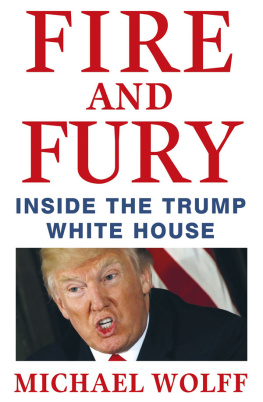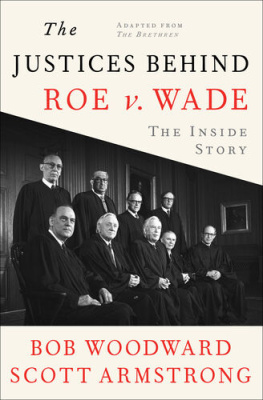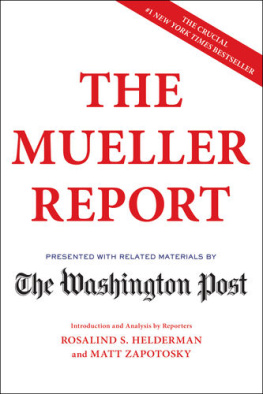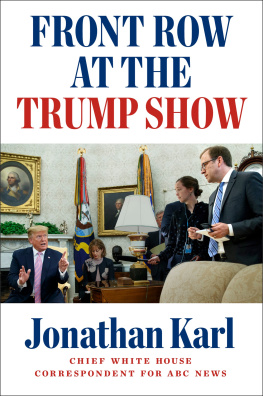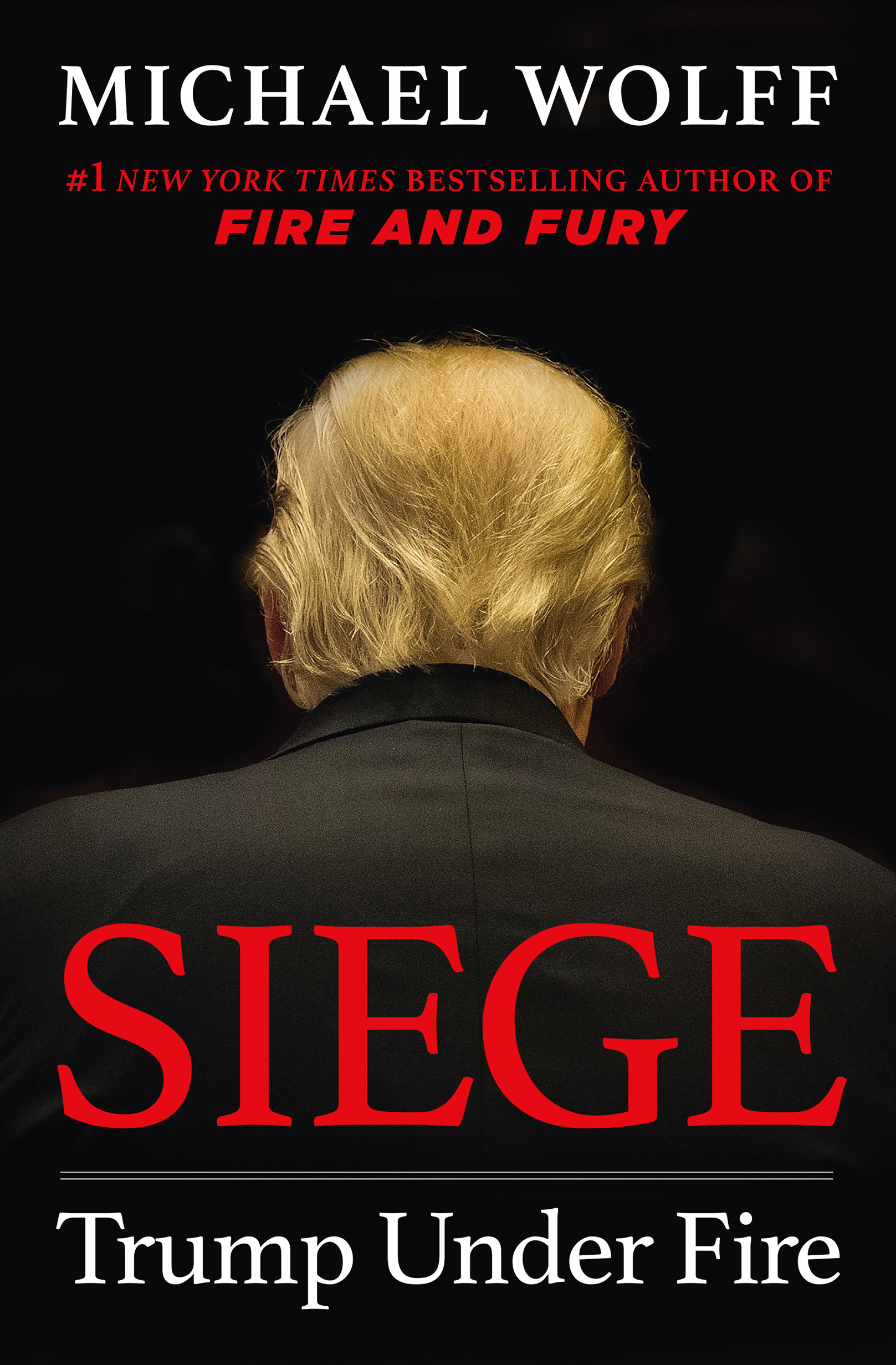The author and publisher have provided this e-book to you for your personal use only. You may not make this e-book publicly available in any way. Copyright infringement is against the law. If you believe the copy of this e-book you are reading infringes on the authors copyright, please notify the publisher at: us.macmillanusa.com/piracy.
Immediately after Fire and Fury was published, the president publicly and furiously broke with Stephen K. Bannon, the man arguably most responsible for making him president, over remarks he had made in the book. Donald Trumps wrath helped cost Bannon the backing of his patrons, billionaire Bob Mercer and his daughter Rebekah, and forced his departure from Breitbart News, the news site that Bannon led and the Mercers controlled.
It is a measure of Bannons character that he stood by his remarks in Fire and Fury without complaint, quibbles, or hurt feelings. In all my years in this business, I have encountered few sources who, after revealing themselves, didnt blame the person who exposed them.
Steve Bannon, as the most clear-eyed interpreter of the Trump phenomenon I know, as the Virgil anyone might be lucky to have as a guide for a descent into Trumpworldand as Dr. Frankenstein with his own deep ambivalence about the monster he createdis, in this volume, back again, and on the record, with my thanks for his trust and cooperation.
Stephen Rubin and John Sterling at Henry Holt are the kind of publisher and editor most writers have only ever dreamed about. Steves full-speed-ahead enthusiasm and confidence has driven this book. Johns meticulousness and insight informs every page; his good grace brought it over the finish line, once again. Holts Maggie Richards and Pat Eisemann have taken this book to market with passion and deftness.
Writing about an unpredictable and vengeful president of the United States involves uncommon publishing risks. My great thanks to John Sargent and Don Weisberg at Macmillan, Holts parent company, for their unwavering, indeed ringing, support.
My agent, Andrew Wylie, and his associates, Jeffrey Posternak in New York and James Pullen in London, on top of providing almost daily advice and service, have coordinated a complex and seamless international publication.
The lawyers on this book, Eric Rayman and Diana Frost, both of whom weathered the presidents legal threats after the publication of Fire and Fury, have remained ever cool, cheerful, unafraid, and steadfastly on the side of publishing the full story.
I have, as always, depended on Leela de Kretser for her friendship and counsel. My great thanks to Danit Lidor who fact-checked this manuscript, Chris de Kretser who checked the check, and to Edward Elson and Thomas Godwin, my able research assistants.
Michael Jackson, John Lyons, Jay Roach, and Ari Emanuel, my partners in trying to render the Trump White House in dramatic form, have helped me think through key aspects of how to tell a political story that is much less about traditional ideas of power than it is about one mans extraordinary public battle with almost everyoneand perhaps most of all with himself.
My great appreciation to the unsung sources here, many of whom have counseled me on a regular, if not daily, basis throughout the writing of this book.
My wife, Victoria, has been my rock and inspiration.
Shortly after Donald Trumps inauguration as the forty-fifth president of the United States, I was allowed into the West Wing as a sideline observer. My book Fire and Fury was the resulting account of the organizational chaos and constant dramamore psychodrama than political dramaof Trumps first seven months in office. Here was a volatile and uncertain president, releasing, almost on a daily basis, his strange furies on the world, and, at the same time, on his own staff. This first phase of the most abnormal White House in American history ended in August 2017, with the departure of chief strategist Stephen K. Bannon and the appointment of retired general John Kelly as chief of staff.
This new account begins in February 2018 at the outset of Trumps second year in office, with the situation now profoundly altered. The presidents capricious furies have been met by an increasingly organized and methodical institutional response. The wheels of justice are inexorably turning against him. In many ways, his own government, even his own White House, has begun to turn on him. Virtually every power center left of the far-right wing has deemed him unfit. Even some among his own base find him undependable, hopelessly distracted, and in over his head. Never before has a president been under such concerted attack with such a limited capacity to defend himself.
His enemies surround him, dedicated to bringing him down.
I am joined in my train-wreck fascination with Trumpthat certain knowledge that in the end he will destroy himselfby, I believe, almost everyone who has encountered him since he was elected president. To have worked anywhere near him is to be confronted with the most extreme and disorienting behavior possible. That is hardly an overstatement. Not only is Trump not like other presidents, he is not like anyone most of us have ever known. Hence, everyone who has been close to him feels compelled to try to explain him and to dine out on his head-smacking peculiarities. It is yet one more of his handicaps: all the people around him, however much they are bound by promises of confidentiality or nondisclosure agreements or even friendship, cannot stop talking about their experience with him. In this sense, he is more exposed than any president in history.
Many of the people in the White House who helped me during the writing of Fire and Fury are now outside of the administration, yet they are as engaged as ever by the Trump saga. I am grateful to be part of this substantial network. Many of Trumps preWhite House cronies continue to both listen to him and support him; at the same time, as an expression both of their concern and of their incredulity, they report among one another, and to others as well, on his temper, mood, and impulses. In general, I have found that the closer people are to him, the more alarmed they have found themselves at various points about his mental state. They all speculate about how this will endbadly for him, they almost all conclude. Indeed, Trump is probably a much better subject for writers interested in human capacities and failings than for most of the reporters and writers who regularly cover Washington and who are primarily interested in the pursuit of success and power.
My primary goal in Siege is to create a readable and intuitive narrative that is its nature. Another goal is to write the near equivalent of a real-time history of this extraordinary moment, since understanding it well after the fact might be too late. A final goal is pure portraiture: Donald Trump as an extreme, almost hallucinatory, and certainly cautionary, American character. To accomplish this, to gain the perspective and to find the voices necessary to tell the larger story, I provided anonymity to any source who requested it. In cases where I have been toldon the promise of no attributionabout an unreported event or private conversation or remark, I have made every effort to confirm it with other sources or documents. In some cases, I have witnessed the events or conversations described herein. With regard to the Mueller investigation, the narrative I provide is based on internal documents given to me by sources close to the Office of the Special Counsel.



